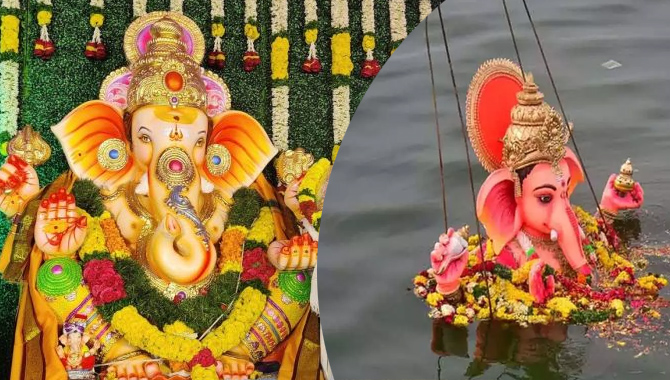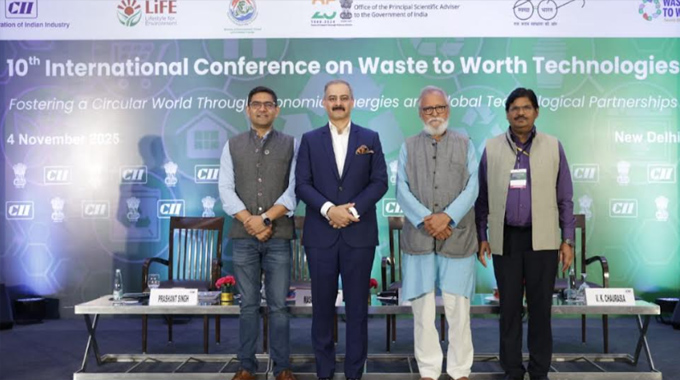Maha Ganapati Puja and Nimajjanam: Revealing Its Scientific, Social, and Environmental Significance

Introduction:
Maha Ganapati Puja and Nimajjanam, a revered Hindu rituals, holds profound scientific, social, and environmental implications. This article aims to unveil the hidden wisdom behind this age-old tradition, emphasizing its universal message of humanity and equality.
Humanity – Equality:
Ganesha, the Manasa Putra of Goddess Parvati, embodies the belief that all beings are equal. In this myth, Adi Shakti Parvati gave life to a flour doll, while Shiva, the primordial god, adorns it with an elephant’s head, thus creating Maha Ganapathi. This timeless narrative signifies that Mahaganapati remains a symbol of unity across the ages. The fusion of the elephant’s head onto Ganesha’s human form and his choice of medicinal plant leaves as sustenance carry profound ecological implications, promoting a sustainable diet and underscoring the interconnectedness of all life.
Clay Ganesha – Jala yajna:
Ancient wisdom dictates the crafting of Lord Ganesha idols from clay sourced from ponds and rivers. Village elders and religious leaders collaborated to organize this practice, channeling the energy of local youth. The excavation of clay not only facilitated idol creation but also augmented water retention in canals, ponds, and rivers. Executed before the monsoon season, this strategy bolstered water storage capacity, benefiting agriculture and drinking water supplies. Moreover, it naturally raised the groundwater level, ensuring that wells remained a reliable water source even during dry spells. This age-old practice of creating clay idols can be seen as an essential part of water conservation, effectively aligning it with the concept of Jala yajna, a sacred act of water offering.
Clay Idols – Fertilizer:
An intriguing aspect of crafting clay Ganeshas involved placing the completed idols beneath trees, alongside payri and some grains. This practice was rooted in the belief that weak trees would thrive in their presence. The hidden science lies in the nutritional value of the puja materials and the unique qualities of the clay. As the Ganesha statues, along with the clay, absorbed rainwater, they enriched the soil, providing vital nutrients to neighboring trees. Historical records suggest that idol immersion took place in later periods, emphasizing the organic nourishment provided by these clay idols to the environment.
Patri Puja – Secret: The customary worship of Ganesha with 21 types of patris holds both cultural and scientific significance. These patris, however, are not ordinary leaves but rather medicinal plant leaves. This meticulous selection is important, as the medicinal properties released during the puja help purify the air, alleviating health issues in the community. This practice, spanning nine days, can be likened to a medical regimen, as it harnesses the healing properties of the patris to safeguard the village from viruses and bacteria.
Immersion – Chemical Aspect:
Post Navratri celebrations, immersing Ganesha statues in nearby ponds or wells is a traditional practice. The immersion of 21 types of Patri and Clay Pratimas effects important changes in the ponds water, within 23 hours is significant. Nimajjanam material leads to the release of medicinal alkaloids into the water, effectively eliminating harmful bacteria and increasing oxygen levels. This environmental secret underscores the responsible disposal of Ganesha idols, contributing to water quality improvement.
By shedding light on these intricate connections between Mahaganapati Puja and science, society, and the environment, we gain a deeper appreciation for this timeless tradition that continues to resonate with profound meaning.
– Turlapati Nagabhushana Rao, MSc (Botany)
Basingstoke, England nrturlapati@gmail.com








